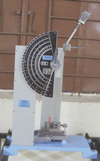1. Johnston EP, Nicholls JI, Smith DE. Flexure fatigue of 10 commonly used denture base resins. J Prosthet Dent. 1981. 46:478–483.
2. Ruffino AR. Effect of steel strengtheners on fracture resistance of the acrylic resin complete denture base. J Prosthet Dent. 1985. 54:75–78.
3. Vallittu PK, Lassila VP. Effect of metal strengthener's surface roughness on fracture resistance of acrylic denture base material. J Oral Rehabil. 1992. 19:385–391.
4. Smith DC. Recent developments and prospects in dental polymers. J Prosthet Dent. 1962. 12:1066–1078.
5. Gutteridge DL. The effect of including ultra-high-modulus polyethylene fibre on the impact strength of acrylic resin. Br Dent J. 1988. 164:177–180.
6. Solnit GS. The effect of methyl methacrylate reinforcement with silane-treated and untreated glass fibers. J Prosthet Dent. 1991. 66:310–314.
7. Vallittu PK. Glass fiber reinforcement in repaired acrylic resin removable dentures: preliminary results of a clinical study. Quintessence Int. 1997. 28:39–44.
8. Berrong JM, Weed RM, Young JM. Fracture resistance of Kevlar-reinforced poly(methyl methacrylate) resin: a preliminary study. Int J Prosthodont. 1990. 3:391–395.
9. Goldberg AJ, Burstone CJ. The use of continuous fiber reinforcement in dentistry. Dent Mater. 1992. 8:197–202.
10. Vallittu PK, Lassila VP, Lappalainen R. Acrylic resin-fiber composite-Part I: The effect of fiber concentration on fracture resistance. J Prosthet Dent. 1994. 71:607–612.
11. DeBoer J, Vermilyea SG, Brady RE. The effect of carbon fiber orientation on the fatigue resistance and bending properties of two denture resins. J Prosthet Dent. 1984. 51:119–121.
12. Vallittu PK, Vojtkova H, Lassila VP. Impact strength of denture polymethyl methacrylate reinforced with continuous glass fibers or metal wire. Acta Odontol Scand. 1995. 53:392–396.
13. Matthews E, Smith DC. Nylon as a denture base material. Br Dent J. 1955. 98:231–237.
14. Gutteridge DL. Reinforcement of poly (methyl methacrylate) with ultra high modulus polyethylene fibers. J Dent. 1992. 20:50–54.
15. Ladizesky NH, Pang MK, Chow TW, Ward IM. Acrylic resins reinforced with woven highly drawn linear polyethylene fibres. 3. Mechanical properties and further aspects of denture construction. Aust Dent J. 1993. 38:28–38.
16. ASTM international. Designation: D 4812-99, Standard test method for un-notched cantilever beam impact resistance of plastics (test method under jurisdiction of ASTM committee on plastics D-20). Annual Book of ASTM Standard. 1999. 03. 14:02.
17. Anusavice KJ Philips' science of dental materials. 2003. 11th ed. St. Louis: Elsevier;733–734.
18. John J, Gangadhar SA, Shah I. Flexural strength of heat-polymerized polymethyl methacrylate denture resin reinforced with glass, aramid, or nylon fibers. J Prosthet Dent. 2001. 86:424–427.
19. Ladizesky NH, Chow TW. The effect of interface adhesion, water immersion and anatomical notches on the mechanical properties of denture base resins reinforced with continuous high performance polyethylene fibres. Aust Dent J. 1992. 37:277–289.
20. Paula E Silva E, Rosa EL, Barbosa SV. Tissue reactions of polypropylene mesh used in maxillofacial trauma. Braz Dent J. 2001. 12(2):121–125.
21. Braden M, Davy KW, Parker S, Ladizesky NH, Ward IM. Denture base poly(methyl methacrylate) reinforced with ultrathin modulus polyethylene fibers. Br Dent J. 1988. 164:109–113.
22. Ladizesky NH, Cheng YY, Chow TW, Ward IM. Acrylic resin reinforced with chopped high performance polyethylene fiber--properties and denture construction. Dent Mater. 1993. 9:128–135.
23. Smith DC. The non-metallic denture base-recent developments. Dent Pract. 1957. 8:73–80.
24. Vallittu PK, Narva K. Impact strength of a modified continuous glass fiber-poly(methyl methacrylate). Int J Prosthodont. 1997. 10:142–148.
25. Uzun G, Hersek N, Tinçer T. Effect of five woven fiber reinforcements on the impact and transverse strength of a denture base resin. J Prosthet Dent. 1999. 81:616–620.
26. Kim SH, Watts DC. The effect of reinforcement with woven E-glass fibers on the impact strength of complete dentures fabricated with high-impact acrylic resin. J Prosthet Dent. 2004. 91:274–280.
27. Karacaer O, Polat TN, Tezvergil A, Lassila LV, Vallittu PK. The effect of length and concentration of glass fibers on the mechanical properties of an injection- and a compression-molded denture base polymer. J Prosthet Dent. 2003. 90:385–393.
28. Vallittu PK. Comparison of two different silane compounds used for improving adhesion between fibres and acrylic denture base material. J Oral Rehabil. 1993. 20:533–539.
29. Clarke DA, Ladizesky NH, Chow TW. Acrylic resins reinforced with highly drawn linear polyethylene woven fibres. 1. Construction of upper denture bases. Aust Dent J. 1992. 37:394–399.
30. Ramos V Jr, Runyan DA, Christensen LC. The effect of plasma-treated polyethylene fiber on the fracture strength of polymethyl methacrylate. J Prosthet Dent. 1996. 76:94–96.




 PDF
PDF ePub
ePub Citation
Citation Print
Print













 XML Download
XML Download